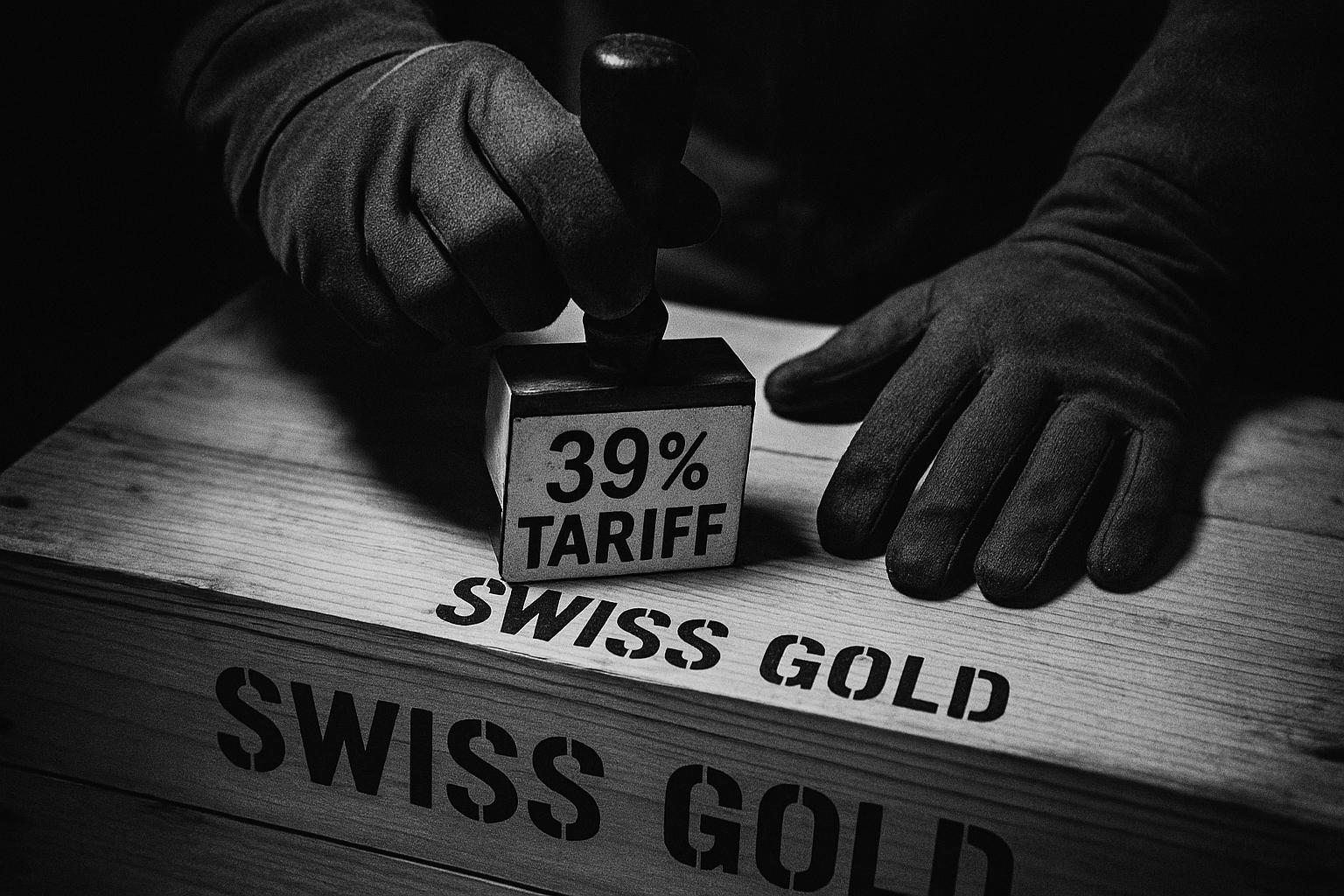The U.S. Customs and Border Protection ruling that reclassifies one‑kilogram and 100‑ounce gold bars under a tariff‑bearing customs code has injected fresh uncertainty into an already volatile market. According to the original report, the change—interpreted to expose Swiss‑refined bars to a 39% tariff—has prompted Swiss refiners to pause shipments to the United States and sent U.S. futures to temporary extremes as participants reassess delivery, settlement and hedging norms. Reuters and the Financial Times both reported that the sudden policy shift has forced market participants to confront the prospect of materially altered cross‑border flows and higher transaction costs.
The immediate market consequence has been a widening dislocation between London spot and New York futures prices. Financial Times analysis described the premium on some COMEX contracts rising by more than $100 per ounce as traders priced in constrained physical availability and settlement risk. The original coverage notes that Switzerland’s central role as the world’s refining hub means a pause in shipments has an outsized effect on delivery standards and the physical channels that underpin paper markets, raising the prospect of a more fragmented global ecosystem centred increasingly on London and Hong Kong.
Industry bodies and market infrastructure providers have moved quickly to stem fragmentation. The London Bullion Market Association has been active behind the scenes, pressing for consistent customs classifications and for the preservation of market mechanisms that link venues. Preserving Exchange for Physical transactions is central to that effort: as explained by market operators, EFPs allow bilateral swaps between futures positions and equivalent physical holdings and are a key channel for converting paper exposure into metal without resorting to on‑exchange delivery, thereby supporting liquidity and price alignment when normal delivery routes are under strain.
The pricing gap has also opened short‑term arbitrage opportunities. Traders are reported to be buying London‑priced metal while shorting U.S. futures to lock in spreads, but practical barriers limit scale. Logistical hurdles—most notably the need to repackage bars into different weights to avoid new tariff classifications, and the added cost and time of rerouting metal through alternative hubs—have narrowed the arbitrage window and raised execution risk for larger positions.
Investor behaviour is shifting in response. AInvest reported heavy inflows into U.S. physical gold ETFs such as GLD and IAU, with roughly $44.8 billion added in July 2025 alone, signalling a flight to instruments that give bullion exposure without immediate physical settlement headaches. The World Gold Council’s Q2 2025 Gold Demand Trends report complements this picture: it shows total demand value reached a record US$132 billion for the quarter and documents strong investment flows and bar and coin purchases, underscoring broader appetite for liquid, non‑futures exposure.
Equities tied to production have outperformed the metal itself. Market analyses show the NYSE Arca Gold Miners Index has risen markedly year‑to‑date, outpacing bullion by a wide margin. Commentators attribute the gap to miners’ built‑in leverage to higher prices, earnings upgrades and the re‑rating of a sector that had been underweighted by many investors—making mining stocks a favoured route for those seeking leveraged exposure without wrestling with cross‑border physical logistics.
Central bank buying has added a further structural layer to demand. The World Gold Council notes that official sector additions were sizeable in the quarter, reinforcing a backdrop of steady reserve accumulation by a number of economies and supporting a constructive long‑term demand narrative beyond tactical flows into ETFs and equities.
Political and regulatory noise has not gone unanswered. Reuters and the Financial Times report that the White House moved to clarify the issue in early August, and statements from officials briefly dented the most extreme futures moves—suggesting a possible administrative correction or executive action could follow. Nonetheless, until formal, durable guidance is issued, market participants face a policy‑dependent landscape where legal challenges or subsequent clarifications by regulators could yet reshape the terms of trade.
For investors the practical takeaway is twofold. In the short term, liquidity and hedging frictions argue for a careful tilt towards liquid, ETF‑based exposure and selective mining equities that provide leverage to higher prices. At the same time, nimble arbitrage desks will continue to assess cross‑market spreads where logistics and cost permit. Market infrastructure preservation—most notably the EFP channel—remains critical to restoring closer alignment between London and New York, and market participants are watching both regulator statements and industry‑level interventions closely for signs of durable resolution.
The episode is a reminder that geopolitical and administrative decisions can rewire commodity market plumbing overnight. While the White House clarification temporarily eased pressures, resilience will depend on a return to predictable customs treatment or a credible legal and regulatory solution that restores the seamless links upon which global bullion markets have long relied.
📌 Reference Map:
##Reference Map:
- Paragraph 1 – [1], [3], [4]
- Paragraph 2 – [4], [1]
- Paragraph 3 – [1], [6], [4]
- Paragraph 4 – [1], [2], [4]
- Paragraph 5 – [1], [2], [5]
- Paragraph 6 – [7], [1]
- Paragraph 7 – [5], [1]
- Paragraph 8 – [3], [4], [1]
- Paragraph 9 – [1], [6], [2], [7]
Source: Noah Wire Services
